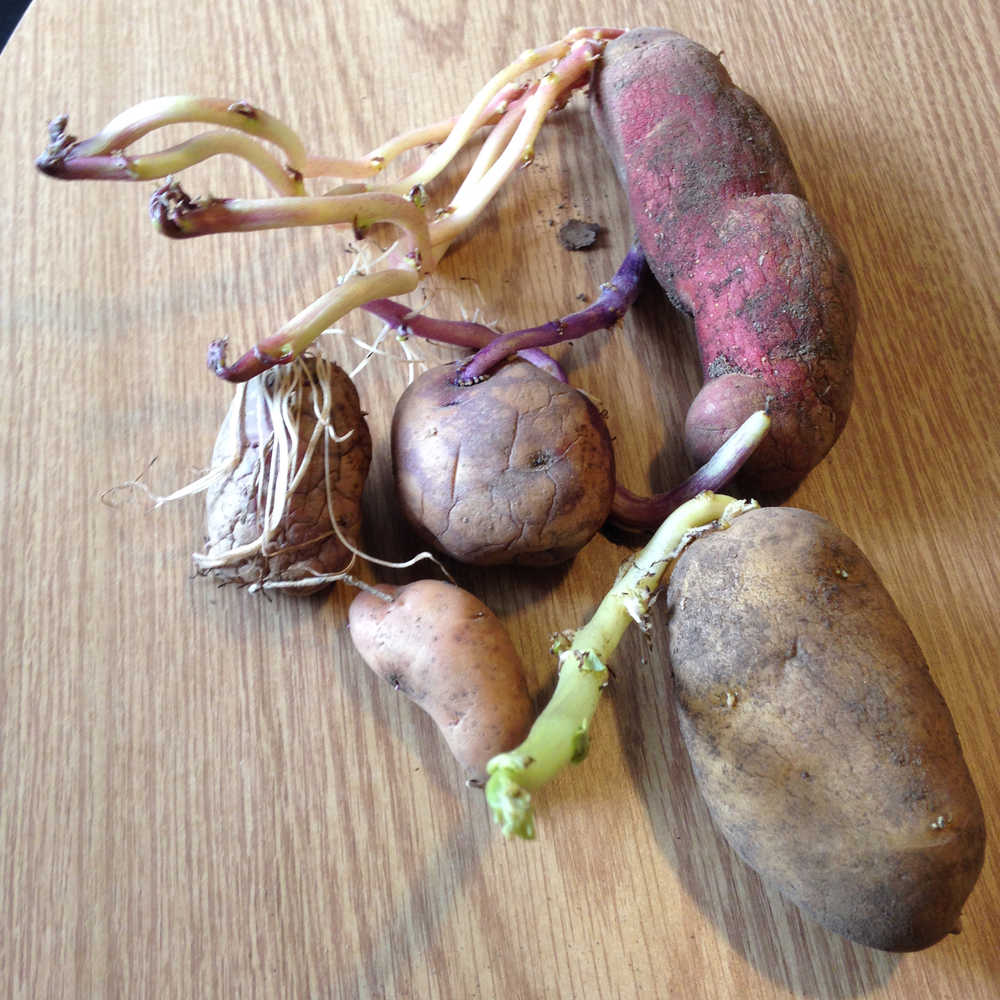Potatoes are one of the easiest things to grow. They are OK with poor soil. They’re even fine with soil that’s acidic, which is most of Southeast Alaska. If you’re recently cleared your garden bed and aren’t sure anything will grow, try potatoes.
Potatoes sprout from the seed potato. All that is required is one eye, that little speck on the potato. You can grow a potato plant from one eye, but usually people leave at least two or three eyes per seed potato. Even Mark Watney in The Martian left two eyes per potato.
When I grew up in Wisconsin, we would cut up seed potatoes and plant them by covering them with dirt, creating a little hill. In a raised bed, this is a little more difficult as it’s harder to get extra dirt to keep adding to the hill as the season progresses.
Most people here dig holes and place the potato on the bottom with a little dirt covering it. The rule of thumb is to cover the seed with the same thickness. So, if your pea is a quarter of an inch, you cover it with a quarter inch of soil. Potatoes respond better if you cover them with less dirt than their dimensions.
As the potato plant emerges, continue adding more dirt to cover the plant, with the exception of the growing tip. Soon, the valley of craters looks full and lush with green plants and the dirt is parallel to the rest of the bed.
The new potatoes grow on top of the seed potato. The more growing space you give them, the greater yields you’ll have plus they’ll tend to be larger. Just like buying a buying a bigger house tends to add more stuff and larger pieces of furniture, potatoes create more to fill the space.
According to Ed Buyarski, the new potatoes begin forming when the plant flowers. During this tuberization time, it is very important to keep the plants watered.
When choosing a variety to try, we are fortunate in that we have a lot of options that do well in Southeast. Best practice is to grow potatoes that are certified for Alaska. Yes, the potatoes that you purchase from the supermarket will sprout and grow potatoes. However they have the potential to introduce diseases into your garden bed and into Alaska, which is remarkably free of potato blight.
Plus, if you purchase Alaska seed potatoes, your variety options are bigger. At the Juneau Community Garden spring meeting, I asked a variety of people what their favorites were. Most people hedged their answer, but in the end, the types that came up most frequently were Nicola and Caribe.
Nicola is a fingerling potato that has high yields and is scab resistant. Whereas, Caribe is a large baking potato. Scab creates blotches on the potato that can be easily cut off. It doesn’t affect the potato taste, but gardeners always feel better producing potatoes without scab.
However, there are so many to try that I tend to try new ones out just to see what they’re like. There are some great blue, purple potatoes such as Magic Myrna and Purple Viking. Some historic potatoes like the Haida and Tlingit varieties as well as some very well-known types such as Yukon Gold. I tend to agree with most gardeners, there is no such thing as a bad potato.
• Corinne Conlon is a freelance writer based out of Juneau. She can be reached at dirtgirlgardening@gmail.com.

